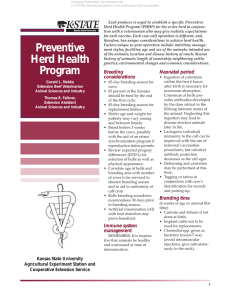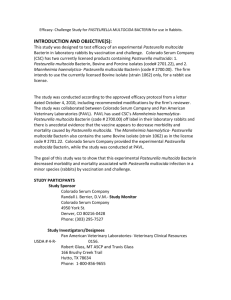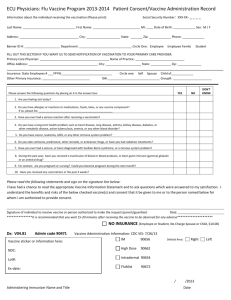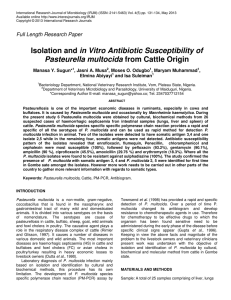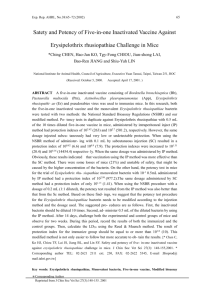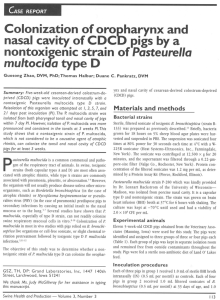Haemorrhagic Septicaemia
advertisement
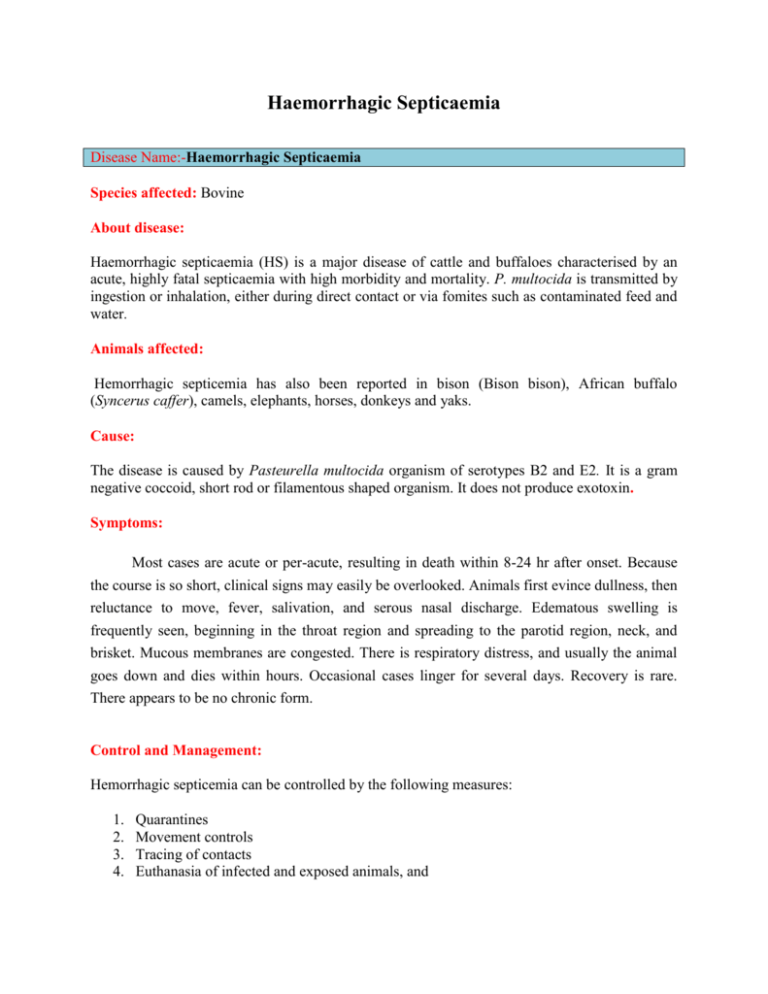
Haemorrhagic Septicaemia Disease Name:-Haemorrhagic Septicaemia Species affected: Bovine About disease: Haemorrhagic septicaemia (HS) is a major disease of cattle and buffaloes characterised by an acute, highly fatal septicaemia with high morbidity and mortality. P. multocida is transmitted by ingestion or inhalation, either during direct contact or via fomites such as contaminated feed and water. Animals affected: Hemorrhagic septicemia has also been reported in bison (Bison bison), African buffalo (Syncerus caffer), camels, elephants, horses, donkeys and yaks. Cause: The disease is caused by Pasteurella multocida organism of serotypes B2 and E2. It is a gram negative coccoid, short rod or filamentous shaped organism. It does not produce exotoxin. Symptoms: Most cases are acute or per-acute, resulting in death within 8-24 hr after onset. Because the course is so short, clinical signs may easily be overlooked. Animals first evince dullness, then reluctance to move, fever, salivation, and serous nasal discharge. Edematous swelling is frequently seen, beginning in the throat region and spreading to the parotid region, neck, and brisket. Mucous membranes are congested. There is respiratory distress, and usually the animal goes down and dies within hours. Occasional cases linger for several days. Recovery is rare. There appears to be no chronic form. Control and Management: Hemorrhagic septicemia can be controlled by the following measures: 1. 2. 3. 4. Quarantines Movement controls Tracing of contacts Euthanasia of infected and exposed animals, and 5. Cleaning and disinfection of the premises. P. multocida is susceptible to most common disinfectants, as well as to mild heat (55°C/131°F). Vaccines: The principal means of prevention is by vaccination. Three kinds of vaccine are widely used: plain bacterin, alum-type precipitated bacterin, and oil-adjuvant bacterin. The most effective bacterin is the oil-adjuvant—one dose provides protection for 9-12 months ; it should be administered annually. The alum-precipitated-type bacterin is given at 6-months intervals. Maternal antibody interferes with vaccine efficacy in calves. The oil-adjuvant vaccine has not been popular because of difficulty in syringing and occasional adverse tissue reactions. Meteorological Occurrence: Higher incidence of HS is associated with moist, humid conditions, high buffalo population density, and extensive free grazing system of management, where large herds graze freely in common pastures and are paddocked together at night.
